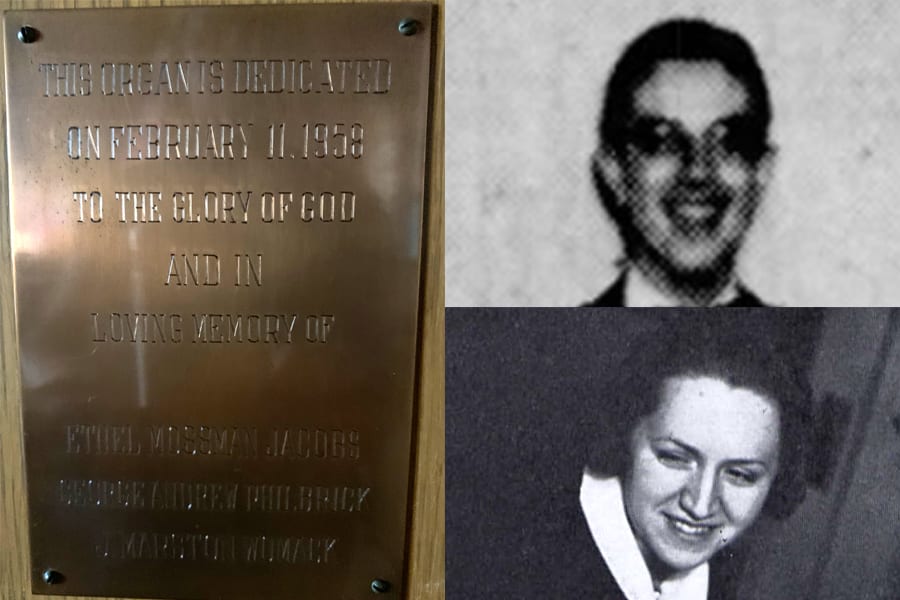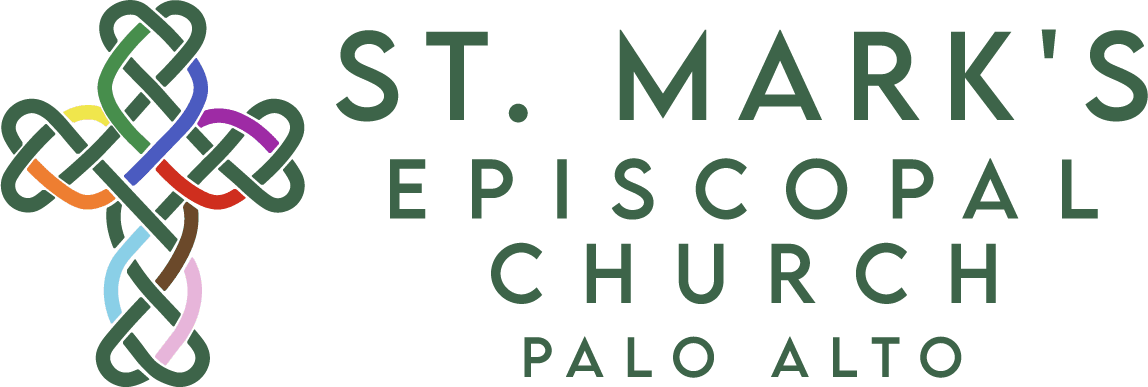Although the church was organized in 1948, The Philbrick Memorial Organ was not installed until 1957. Up to that time, the church made do with a Hammond Organ lent by Mrs. Edwin Smith, a used electronic organ bought from a Burlingame church in 1952, and finally a pair of organs (a Wurlitzer and a Baldwin) that were moved between the Chapel and the Parish Hall (the two main worship spaces until the main sanctuary was built in 1957) (A Brief History). It was while the new church was under construction in 1956, that Norman and Alice (aka Geraldine) Womack Philbrick stepped up to provide the church with an organ worthy of its beautiful new sanctuary.

The new pipe organ was a gift in memory of the couple’s fathers and Geraldine’s aunt. The Philbrick’s backgrounds were somewhat similar. Both were only children. Both came to California with their parents in the early 1930’s during the Great Depression. Hers were J. Marston and Dorothy Stuart Womack from Oklahoma. His were George and Stella Daisy Mossman Philbrick from Fort Wayne, Indiana. Both Norman and Geraldine loved literature, theater, and music. They met and married while both were students at Pomona College – “She studied English and English literature and he, English and Drama” (Sydney Morning Herald). They married in 1941 and moved to Palo Alto where Norman got his MA at Stanford in 1942. He was hired to teach at Stanford in 1943 so they stayed and raised four children in Palo Alto. They were early and long-time members of St. Mark’s.
In addition to donating the St. Mark’s organ, the Philbrick’s were heavily involved in the arts throughout their lives. He served as head of Stanford’s Speech and Drama department, president of the American Theater Association, and also taught at Pomona, Scripps and Pasadena Playhouse. Norman wrote plays and Geraldine wrote mystery novels (The Los Angeles Times and the Sydney Morning Herald). The couple also left behind a widely renowned special collection of research materials for English and American drama (Philbrick Library Collection of Theater Letters). They were remarkable and creative people.
At the August 15, 1956 Vestry meeting, it was approved “that we accept most graciously Dr. and Mrs. Philbrick’s generous offer of the gift of a pipe organ.” The clerk was asked to write them a thank you note! (Vestry Minutes). In January of 1957, Canon West informed the Vestry that for the sake of “expediency” he had deposited a large donation for the organ into a special account. No withdrawals from this account could be made unless approved by two of the following: Canon West, Dr. Philbrick, and Mr. Anderson (the Treasurer) (Vestry Minutes).

Built by Casavant Freres of St. Hyacinthe, Quebec, as Opus 2398, the pipe organ was installed and voiced in August of 1957 by Richard C. Stenger, Jr. (a representative for Casavant). C. Thomas Rhoads (St. Mark’s organist at that time) designed the specifications with the cooperation of Mr. Stenger. Professor Herbert Nanney of Stanford University played the dedicatory recital on February 11th, 1958.
The main organ console is in the front of the church behind the altar. The Choir Organ is behind the chancel wall on the Epistle side of the building. The Positiv Organ is affixed to the Epistle Chancel wall. The Antiphonal Organ is in the gallery at the rear of the church with its own separate console.
You can hear the organ played on any Sunday at St. Mark’s. We also have occasional special concerts that feature the organ (annually on Halloween and New Year’s Eve). Check the calender for more information.
By LeeAnne McDermott
Hear St. Mark’s organist, Dr. James Welch, play Bach on the St. Mark’s Organ
Read the original brochure about the organ
Read a list of St. Mark’s organists, and details about the organ’s specifications
